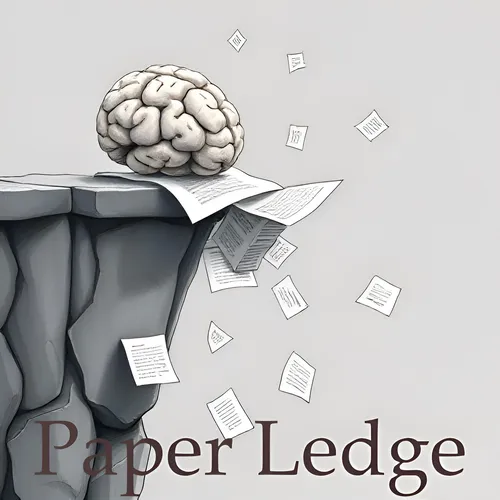Machine Learning - TrajEvo Trajectory Prediction Heuristics Design via LLM-driven Evolution
- Author
- ernestasposkus
- Published
- Fri 08 Aug 2025
- Episode Link
- https://www.paperledge.com/e/machine-learning-trajevo-trajectory-prediction-heuristics-design-via-llm-driven-evolution/
Hey PaperLedge crew, Ernis here, ready to dive into some fascinating research! Today, we're tackling a paper about predicting where people are going to move next – think about it, from self-driving cars dodging pedestrians to robots navigating a busy hospital, knowing what someone will do next is super important. The paper is called "TrajEvo," and it's all about making these predictions smarter, faster, and more reliable.
Okay, so picture this: you're trying to cross a busy street. You instinctively watch the pedestrians, trying to guess if they're going to stop, speed up, or suddenly change direction. We do this kind of prediction all the time! Now, traditionally, these kinds of predictions were made using pre-programmed rules, like "people tend to walk in straight lines" or "they slow down near crosswalks." But these rules, while simple, often miss the mark because people are unpredictable.
Then came deep learning – powerful computer models that can learn from tons of data. They're much better at predicting than those old rules, but they have some major downsides. First, they're computationally expensive, meaning they need a lot of processing power. Second, it's hard to understand why they make the predictions they do. It's like a black box! And most importantly, they often fail when faced with situations they haven't seen before – what researchers call out-of-distribution, or OOD, scenarios. Imagine a self-driving car encountering a flash mob – the deep learning model might just freeze up!
That's where TrajEvo comes in. The researchers behind TrajEvo asked a really interesting question: Can we use Large Language Models (LLMs) - like the ones powering chatbots - to automatically create these prediction rules? And can we make these rules more adaptable and generalizable?
The answer, according to this paper, is a resounding YES!
TrajEvo works by using what's called an evolutionary algorithm. Think of it like natural selection for prediction rules. It starts with a bunch of random rules, tests them out on past trajectory data, and then keeps the best ones. These "best" rules are then tweaked and combined to create new, hopefully even better, rules. This process repeats over and over, generation after generation, until you end up with a set of super-smart prediction rules.
- Key Innovation 1: Cross-Generation Elite Sampling: To avoid all the rules becoming too similar, TrajEvo keeps some of the best rules from previous generations. It’s like bringing in seasoned veterans to mentor the younger generation, ensuring diversity and preventing the system from getting stuck in a rut.
- Key Innovation 2: Statistics Feedback Loop: This is where the LLM really shines. It analyzes the predictions made by the different rules and figures out what went wrong. It then uses this information to refine the rules, making them even more accurate. Think of it as a coach reviewing game footage and giving personalized feedback to each player.
So, what's the big deal? Well, TrajEvo outperformed existing rule-based methods on multiple real-world datasets. But the really impressive part is that it also beat both rule-based AND deep learning methods when faced with unseen, out-of-distribution data. That means it's much better at generalizing to new and unexpected situations.
According to the paper, TrajEvo:
"...marks a promising step toward the automated design of fast, explainable, and generalizable trajectory prediction heuristics."
In other words, it's a big step towards creating prediction systems that are fast, easy to understand, and can handle anything the real world throws at them.
Why does this matter?
- For Robotocists and AI Researchers: TrajEvo provides a powerful new tool for building more robust and reliable autonomous systems.
- For Self-Driving Car Engineers: It offers a way to improve the safety and performance of self-driving cars, especially in unpredictable environments.
- For Everyone: Ultimately, this research could lead to safer and more efficient interactions between humans and machines in all sorts of contexts.
This research really opens up some interesting questions. For example, how can we ensure that the LLM doesn't introduce biases into the prediction rules? And what are the ethical implications of using these types of systems to predict human behavior? Could this technology be used to manipulate or control people?
And, thinking even bigger, could this approach be applied to other areas beyond trajectory prediction? Could we use LLMs and evolutionary algorithms to design better algorithms for other complex problems, like drug discovery or climate modeling?
That's all for this week's PaperLedge deep dive! I hope you found it as fascinating as I did. Until next time, keep learning, keep questioning, and keep exploring!
Credit to Paper authors: Zhikai Zhao, Chuanbo Hua, Federico Berto, Kanghoon Lee, Zihan Ma, Jiachen Li, Jinkyoo Park
